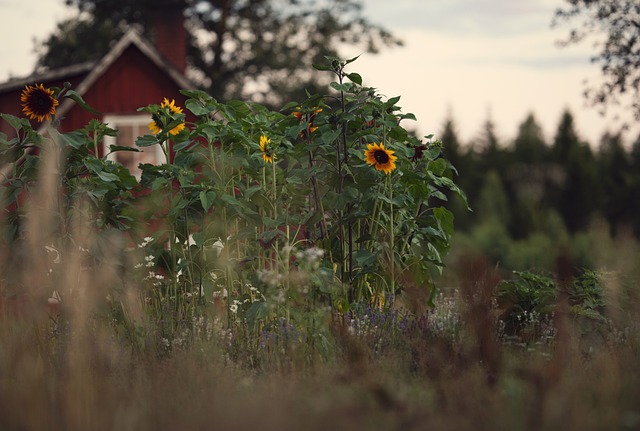TL;DR:
Optimizing your backyard through outdoor space zoning is key to creating a harmonious blend of indoor and outdoor living. By dividing your yard into functional zones like relaxation, dining, and entertainment areas, you enhance both aesthetics and practicality. This strategic planning allows for seamless transitions between activities, catering to diverse needs and ensuring your patio and garden serve as a versatile multi-purpose space for relaxation, entertaining, and pursuing hobbies while connected to nature. Implement these backyard design tips to achieve a cohesive flow, maximizing the potential of your outdoor living area design for all occasions.
In today’s digital age, transforming your backyard into a vibrant outdoor living space is more than just adding greenery; it’s about seamlessly blending indoor comfort with natural beauty. This article explores innovative layouts for achieving that perfect balance between the two worlds. We delve into crucial aspects like outdoor space zoning to enhance functionality, offer backyard design tips for optimizing flow and connection, and present multi-purpose backyard layout ideas tailored to diverse needs. Discover how to create dedicated zones for dining, entertaining, gardening, and relaxation, all while enhancing both aesthetics and practicality.
Defining Outdoor Space Zoning for Seamless Integration
Defining Outdoor Space Zoning is a key step in achieving seamless integration between indoor and outdoor areas. By dividing your backyard into distinct yet interconnected zones, you create a functional and inviting layout that caters to various activities. Imagine a multi-purpose backyard where you can relax on the patio, dine al fresco, or entertain friends—all while enjoying the lush garden surroundings. Outdoor space zoning allows for this versatility by dedicating specific areas for different purposes.
For instance, consider creating a dedicated seating area near the house for casual conversations and reading, a more formal dining zone with a built-in kitchen for larger gatherings, and an open lawn for kids’ play or spontaneous outdoor yoga sessions. This strategic planning ensures that your backyard design tips are both aesthetically pleasing and practical. With optimal backyard flow, you can move effortlessly from one zone to another, enhancing the overall outdoor living area experience.
– The concept of outdoor space zoning explained
Creating a seamless blend between indoor and outdoor spaces is an art that many homeowners are embracing for their backyard layout ideas. Outdoor space zoning is a key concept in achieving this harmonious connection, allowing for a functional backyard design that caters to various activities and moods. By dividing your outdoor area into distinct zones, you can optimize the flow of your backyard, making it a versatile and inviting environment.
For instance, consider designing areas dedicated to relaxation and entertainment. A cozy seating zone with comfortable furniture and a built-in fire pit creates a peaceful retreat, while an adjacent patio offers a vibrant setting for gatherings. Incorporate garden beds or vertical greenery to soften the transition between these zones, enhancing both aesthetics and privacy. These functional backyard zones cater to different needs, ensuring your outdoor living area is as practical as it is picturesque.
– Benefits of separating functional areas in your backyard
Separating functional areas in your backyard can significantly enhance both its aesthetics and usability. By creating distinct zones for various activities, such as dining, entertaining, relaxing, or gardening, you not only improve the overall flow of the space but also cater to diverse needs. This approach allows for better organization, making it easier to host gatherings or simply enjoy some quiet time alone in your outdoor sanctuary.
Backyard layout ideas that incorporate outdoor space zoning offer a range of benefits. They encourage a more balanced and purposeful use of the backyard, ensuring each area serves its intended purpose while still fostering a seamless connection between indoor and outdoor living. These design tips can transform your backyard into a dynamic multi-purpose space where you can relax, entertain, or pursue hobbies, all while enjoying the beauty of nature just steps from your back door.
– Key considerations for effective zoning
When designing innovative layouts to blend indoor and outdoor spaces, effective zoning is key. The first step in backyard planning should be defining different functional zones that cater to various activities and aesthetics. For instance, designate a quiet reading or meditation area with natural elements and shade, a vibrant patio space for entertaining guests, and a multi-purpose garden for cooking, entertaining, or simply enjoying nature. Outdoor space zoning allows for a seamless transition between indoor comfort and outdoor adventure, enhancing the overall backyard design tips and creating a cohesive flow.
Consider the specific needs of each zone in terms of patio and garden zoning. For example, incorporate comfortable seating with easy access to shade trees or pergolas in relaxation areas. In entertainment zones, include ample space for dining tables, outdoor kitchens, and vibrant landscaping that complements the overall backyard layout ideas. Optimizing backyard flow ensures that each area is accessible and easily transitions from one to another, making the most of your outdoor living area design and creating a functional, inviting space for all occasions.
By incorporating strategic outdoor space zoning into your backyard layout ideas, you can create a functional and inviting multi-purpose backyard. This approach allows for optimal backyard flow optimization while enhancing overall outdoor living area design. With careful planning, patio and garden zoning can transform your backyard into a vibrant, seamless extension of your indoor living spaces, offering both aesthetic appeal and practical benefits. Implement these backyard design tips to craft a harmonious blend of nature and contemporary living.
